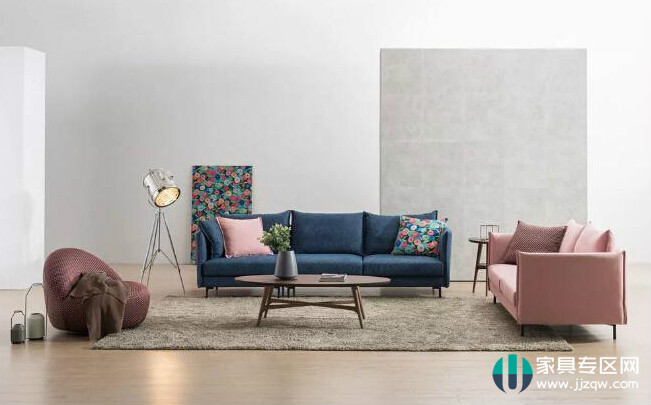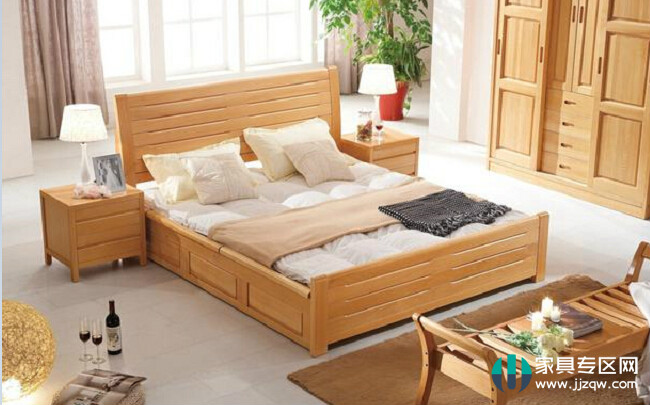In the decoration pollution, formaldehyde is definitely the "number one killer", memory loss, low work efficiency, abnormal emotions, loss of appetite, if the body has these symptoms to be vigilant, maybe not you are sick, but formaldehyde poisoning! For the decoration Formaldehyde is not everywhere, is our understanding really comprehensive and correct? The formaldehyde evaporation period is really 3-15 years? How to remove the decoration formaldehyde? Below, we talk about the formaldehyde killer. First, what is formaldehyde? Formaldehyde is a colorless, strongly irritating gas that is readily soluble in water, alcohols and ethers. Formaldehyde is gaseous at normal temperature, usually in the form of an aqueous solution, and 35 to 40% of the aqueous formaldehyde solution is called formalin. It has been identified as a carcinogenic and carcinogenic substance by the World Health Organization and the International Agency for Research on Cancer. Second, what is the cause of high risk of formaldehyde? As a high-risk gas, formaldehyde will bring us physical harm. The biggest reason is that formaldehyde is volatile (which will volatilize with temperature and humidity in the room) and has a long release period (with 3-15 years). Release period), a wide range of sources (interior decoration, various furniture, smoke from smoking, etc.) these three characteristics. Third, you may have misunderstood "Mr. Formaldehyde" Myth 1: The new home is smelly, is it formaldehyde? New homes have a smell after renovation, almost everything that consumers know, but is it formaldehyde? This is not right. First of all, formaldehyde (molecular formula HCHO) is a colorless, odorless, highly irritating gas with a relative molecular mass of 30.03 which is slightly heavier than air. Soluble in water, alcohol and ether, a gaseous pollutant at room temperature. It is obviously incorrect to judge the presence or absence of a colorless and odorless contaminant with or without odor. Secondly, the new home has just been decorated, because the pollutants in many indoor pollution sources are volatilized in large quantities. Among them, the pollutants are benzene, toluene, xylene, etc. Formaldehyde and ammonia are odorless but irritating. Some of the ingredients in TVOC are odorless and non-irritating, and some ingredients have special odor or irritation. Third, it is unscientific to judge whether or not there is a pollutant by the presence or absence of odor, and the scientific and reasonable way is to judge and verify by indoor air detection. Misunderstanding 2: The difference between long-term release of formaldehyde and short-term volatile formaldehyde The source of pollution of volatile formaldehyde is the same? Speaking of formaldehyde pollution, most consumers will say that the formaldehyde volatilization period is too long for 3-15 years. Is it true that all formaldehyde emission sources are 3-15 years? Actually, formaldehyde pollution has a long-term release source. Release source and short-term release source. The long-term release source of formaldehyde includes various wood-based panels, wood-based panel furniture, laminate flooring, etc., which contain formaldehyde vaporization period of 3-15 years, which must be solved through effective treatment. The short-term release sources of formaldehyde include formaldehyde in curtains, wallpapers, mattresses and painted surfaces, and the formaldehyde volatilization period is about one year. The formaldehyde in these articles is generally not high in content, and the evaporation period is not long, which is relatively easy to handle. Myth 3: Floors and walls are the main sources of formaldehyde pollution? Many consumers are worried about the problem of buying the floor, which is the main source of pollution caused by formaldehyde pollution. In fact, we should treat this aspect in detail and should not be generalized. There are three types of flooring: solid wood, solid wood composite, and reinforced composite. There is no formaldehyde in solid wood flooring. We will not say much here. Let's take a look at the other two types of composite flooring. The substrate of the composite floor is a high-density fiberboard made of urea-formaldehyde resin glue, or a wood-based board of three-layer, multi-layer plywood. The base material of the laminate flooring is mostly high-density fiberboard, the surface is wear-resistant layer, and the PVC has a balance layer on the back. The formaldehyde is mainly released from both ends, and the release amount is relatively small. The qualified laminate flooring of the regular manufacturer will cause Indoor formaldehyde pollution, but the concentration of formaldehyde pollution is within the limits set by national standards, and generally does not exceed the standard. The material of the parquet is plywood. There are two layers and two layers of plywood. The surface is painted and painted. The formaldehyde is not released. The back is not closed (the individual brand manufacturers will seal it), and formaldehyde is released from the back and end, even if It is a solid wood composite floor made of E1 grade plywood that meets the national environmental protection standards. Once in the summer, the formaldehyde in the room will exceed the formaldehyde concentration standard set by the state. According to the practice experience of the wood boy engineers, the solid wood composite floor will cause the indoor formaldehyde concentration to exceed the national standard of 0.1mg/m3, but generally will not reach or exceed 0.3mg/m3. Most of the walls will be painted with latex paint, and in the short term there will be problems with VOC and a small amount of formaldehyde. But there will be another problem - that is, the adsorption of formaldehyde and other pollutants, because the wall not only has a large surface area, but also has the ability to absorb. When the doors and windows are closed or the ventilation is not smooth, the formaldehyde released by other sources will be adsorbed by the wall. When the ventilation reduces the concentration of formaldehyde in the indoor air, the formaldehyde adsorbed by the wall will be released into the air to form secondary pollution. Therefore, the wall will be a release source of formaldehyde in the short-term application of the latex paint, but Not the main one, it will become a secondary formaldehyde pollution source later. Misunderstanding 4: Pay attention to kitchen formaldehyde, do not pay attention to bedroom formaldehyde? In the indoor functional area, the formaldehyde problem in the bedroom is the first thing we should pay attention to, because we have the longest time in the bedroom, and the bedroom is our core functional area. In most cases, there are more items placed, which is prone to formaldehyde pollution. . Many times, the size of our kitchen is small, and with the popularity of the whole kitchen cabinet, the degree of formaldehyde pollution in the kitchen is also very high, but the formaldehyde in the kitchen is secondary to the importance of the bedroom. Because we don't have a long time in the kitchen every day, and we open the range hood to exhaust the air when cooking and cooking, which is beneficial to the dilution of pollutants in the indoor air. 4. What harm does formaldehyde have on human physiological systems? The biggest harm of formaldehyde to human physiological system is irritating, toxic and carcinogenic. 1. Irritant: It can stimulate the eyes, skin, mucous membranes, etc., causing eye pain or tearing, and dermatitis and other symptoms. 2. Toxicity: It has certain toxicity to the eyes, lung function, respiratory system, nervous system and immune system. 3, carcinogenicity: formaldehyde is a carcinogen, is one of the risk factors for tumor death, long-term exposure can cause nasopharyngeal carcinoma, brain tumors, nuclear mutations, leukemia and so on. 5. How to judge whether formaldehyde poisoning? Usually when we enter the finished room, we will smell the room and feel a little discomfort. This is a mild symptom of formaldehyde poisoning. China's "Sanitary Standards for Formaldehyde in the Air" (GB/T16127-1995) clearly stipulates that only ordinary people with formaldehyde content less than 0.08mg/m3 will not be able to feel its presence. The following symptoms can also determine whether formaldehyde poisoning. 1. Eyes are weeping and blurred. 2, the throat is not comfortable, there is a sense of foreign body. 3, memory loss, low work efficiency, abnormal emotions, loss of appetite. 4, the newlyweds infertility after marriage, if normal pregnancy can also lead to fetal malformations or miscarriage. 5, indoor plants can not survive, pets also inexplicably die. 6. Which groups of people will formaldehyde affect? For civil servants and OLs who have been working indoors for a long time, there will be serious health threats; for children with low immunity, pregnant women, and the elderly, the harm will be more serious. According to statistics, more than 95% of newly married couples in China have spent their weddings in newly renovated houses. Because they have neglected the prevention of formaldehyde, they have laid a disaster for themselves. About 40,000 leukemia patients will be added each year in China, and more than half of them are only 2-7 years old, and 90% of them have had indoor decoration in the first half of their stay. 7. What are the preventive measures for formaldehyde and air purification? 1. Material selection before decoration: Formaldehyde is generally contained in rubber, such as artificial board, all kinds of aging plastics, etc., the production of new furniture, wall and floor decoration, all use adhesive. Wherever a large amount of adhesive is used, there is always formaldehyde release. Therefore, when selecting materials, it is best to choose solid wood furniture or metal doors and windows. When it is necessary to use the adhesive, try to use a high level of environmental protection and release less formaldehyde. 2, after the decoration to remove the formaldehyde ventilation method: After the decoration, cabinets, wooden doors, furniture have entered the house, you need to open large windows ventilation, it is best to open all the window doors, let the air convection, do the indoor formaldehyde diffusion, When it is ventilated and scented, it is generally not recommended to stay in the house immediately. The ventilation method is a method to quickly disperse large concentrations of formaldehyde, but it cannot effectively eradicate formaldehyde. 3, adsorption method: newly renovated houses and newly-made furniture, generally by preventing the way of activated carbon package, in order to better remove indoor irritating taste and harmful substances, this method is also to remove high-concentration formaldehyde in a short period of time. 4, green plant long-term method: In order to continue to reduce the indoor release of formaldehyde, generally plant green plants in the family, such as spider plant, aloe vera, green radish, tigertail orchid and so on. It can last for a long time, and it can absorb formaldehyde without any side effects. 5, water-soluble method: According to the characteristics of formaldehyde soluble in water and alcohol (alcohol), placing more water indoors can reduce the amount of formaldehyde in the air to a certain extent. This method needs to promptly dump the water dissolved in formaldehyde to prevent the formaldehyde dissolved in water from being volatilized into the air. 6, formaldehyde often detection method: indoor formaldehyde content is a health standard, in order to prevent the occurrence of hazards, it is recommended to do indoor formaldehyde detection before check-in, and use the above removal method to deal with. Scientific testing is needed, and it is not possible to worry too much about the dangers of formaldehyde by feeling alone. Hair Styling Pomade Gel Wax Hair Styling Pomade Gel Wax DELIN HAIR COSMETICS , https://www.hairstylingwaxfactory.com
